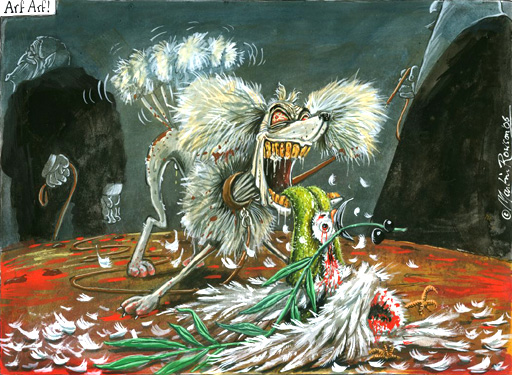|
December 18, 2006
I'm reading about Walter Benjamin and his exploration of Baroque aesthetics (of the 17th century), the way the signs of death in its visual culture was used, and the distinction between allegory and symbol. The term "baroque" as an adjective is often understood to refer to what is over-ornamented, unnecessarily complex, or obscure in language. It is an art of decadence, and as a style, the baroque turns harmony into a dissonance by using imperfect proportions. Baroque also designates a civilization that can be associated with the period of absolute monarchy, with an alliance of church and state to maintain the hierarchical structure of society, and even with economic mercantilism.

Martin Rowson, The Poodle and the Dove, 2006
In allegory history appears as nature in decay or ruins and pre-modern Baroque aesthetics took the form of melancholy reflections (or contemplation) of the inevitability of decay and distintegration. A transitory nature is an allegory for human history understood as death, ruin, catastrophe. Benjamin argued that Baroque allegory was a mode of expression that is peculiar to social disruption and war when human suffering and material ruin are the core of historical experience.
Allegory is a form of cultural and artistic expression. It looks like this form is being used by Martin Rowson as a response to the horrifying destructiveness of the UK invasion of Iraq.
|
